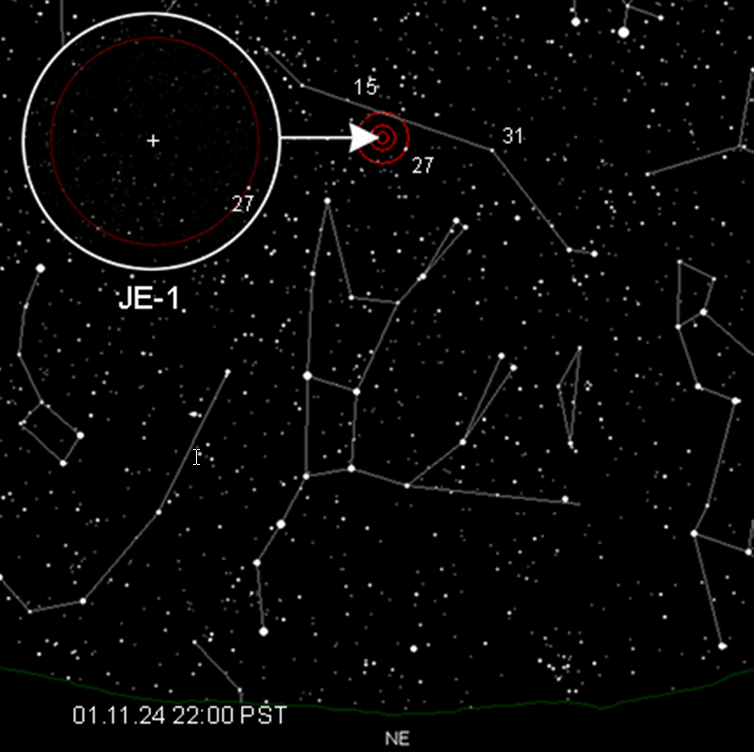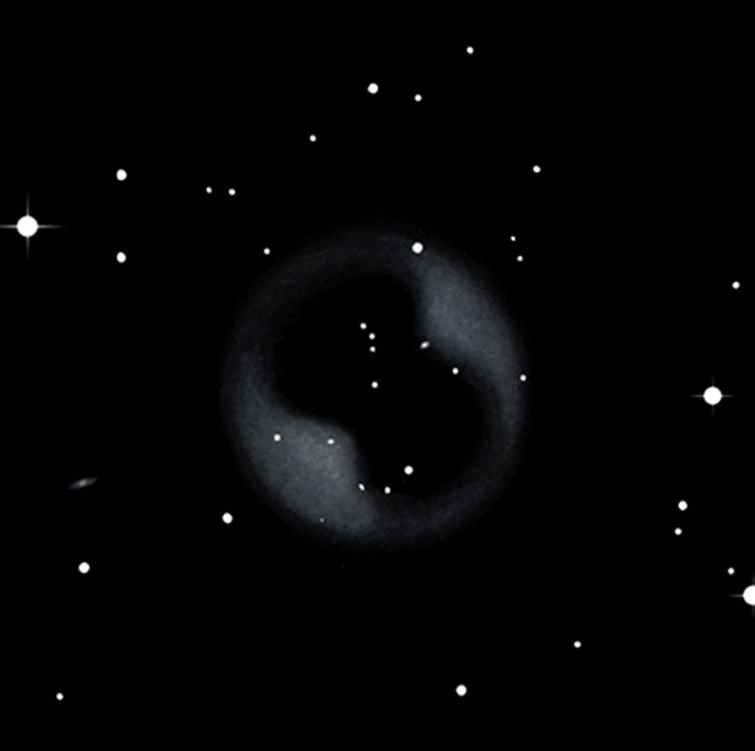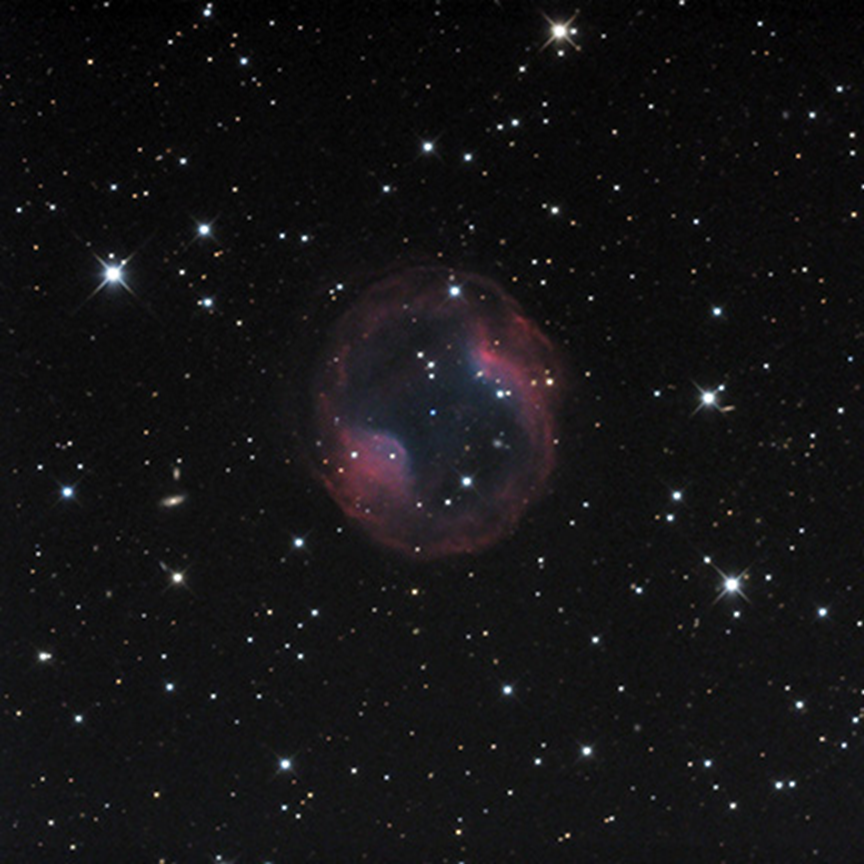
One of the more interesting, obscure, and esoteric deep sky objects visual in a dark sky setting would certainly be the large, faint planetary nebula Jones-Emberson 1 (JnEr 1), also known as the Headphones Nebula. Discovery was made on a photographic plate in 1939 by astronomers Rebecca Jones (discoverer of planetary nebula Jones 1) and Richard Emberson. At approximately 1,600 light years distance, it is large and dim, with a low surface brightness and a notably blue colored magnitude 16.8 white dwarf progenitor at its core. Few have observed this and you may find it worth adding to your list of challenge objects.
The first visual observation is thought to have been on February 23, 1985 by Steve Gottlieb (Adventures In Deep Space) and Dr. Jack Marling, creator of many useful narrow-band filters at his business, Lumicon. "First Light" visually was through a 17.5" Dobsonian in the hills south of Livermore, California. Quoting Gottlieb, it was "?quite exciting in those days not knowing what we'd find, as there were no observations (or much information) to refer to."

Using magnitudes 4.25 and 4.34 "figure" stars 31 and 15 Lyncis, find 27 Lyncis at magnitude 4.78 then move 2-1/2 degrees northwest. The distinctive star pattern in the finder inset above should get you very close.
To help, here are a few visual observations:
Jim Shields in a 17.5" telescope: "At 82x using an OIII filter this huge annular planetary is slightly elongated with two brighter "knots" along the rim. These appear as large enhanced arcs with the SE arc the most prominent. A pair of small galaxies NGC 2474 and 2475 lie 33' south."
Two from Gottlieb:
13.1": Visible with direct vision using 62x and an OIII filter. Very large, diffuse, and round. Using averted vision two brighter portions are just visible at the NW and SE edge of the rim.
18": excellent view at 64x (31mm Nagler) with an OIII filter. Appears fairly faint with a nearly 6' circular boundary. The surface brightness is quite irregular with darker center giving an annular appearance. Brighter arcs are situated along the northwest and southeast ends with the large southeast "knot" slightly brighter.
This fine sketch by Bertrand Laville in a very large Dobsonian shows wonderful "Headphone" shape detail:

Gottlieb also related this interesting story regarding the confusion of JnEr 1 with two nearby galaxies in Lynx, NGC 2474 and 2475:
Jones and Emberson's discovery announcement (here) confused the identification: "a faint nebular ring has been detected joining two condensations, NGC 2474, observed by Sir John Herschel, and NGC 2475. The latter was discovered by Lord Rosse who described it as forming a double nebula with Herschel's object." So they failed to credit themselves with the discovery!
The mistaken identification was repeated in several sources including the old Skalnate Pleso "Atlas of the Heavens," Burnham's "Celestial Handbook" and Perek and Kohoutek's "Catalogue of Galactic Planetary Nebulae." The mix-up (caused by an error in the original NGC positions) was cleared up at the start of a 1977 journal article "The Planetary Nebula 164+31.1."
A wonderful target for imagers, he is an example courtesy of Dan Crowson.

If you observe or image this object, please share your results on our Facebook page.















